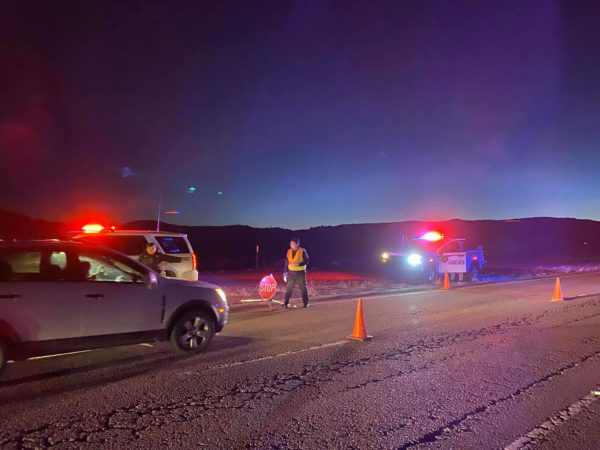
- Details
- By Native News Online Staff
WINDOW ROCK, Ariz. — With the flattening of the curve of COVID-19 positive cases on the Navajo Indian Reservation, Navajo Nation officials have eased off the 57-hour weekend lockdown to 32-hour lockdown beginning this weekend. The Navajo Nation will implement a 32-hour weekend lockdown beginning on Saturday, Aug. 8 at 9:00 p.m. (MDT) until Monday, Aug. 10 at 5:00 a.m. The daily curfew will also be changed to 9:00 p.m. to 5:00 a.m.
“With the revised hours for the weekend lockdown, it presents more time for families to prepare for the upcoming winter season by gathering fire wood, supplies, food, and other essential items. The winter season will present more challenges due to the flu season, so we all need to remain diligent about staying home, washing hands, wearing masks, social distancing, and avoiding large crowds. Please continue to pray for our communities, front line warriors, and those fighting the virus.” Navajo Nation President Jonathan Nez said.
On Thursday, the Navajo Department of Health, in coordination with the Navajo Epidemiology Center and the Navajo Area Indian Health Service, reported 28 new COVID-19 positive cases for the Navajo Nation and one more death. The total number of deaths has reached 468 as of Thursday. Reports indicate that 6,775 individuals have recovered from COVID-19. 83,769 people have been tested for COVID-19. The total number of COVID-19 positive cases for the Navajo Nation is 9,223.
Navajo Nation COVID-19 positive cases by Service Unit:
- Chinle Service Unit: 2,240
- Crownpoint Service Unit: 772
- Ft. Defiance Service Unit: 695
- Gallup Service Unit: 1,494
- Kayenta Service Unit: 1,274
- Shiprock Service Unit: 1,442
- Tuba City Service Unit: 862
- Winslow Service Unit: 437
* Seven residences with COVID-19 positive cases are not specific enough to place them accurately in a Service Unit.
On Wednesday, the state of Arizona reported 1,444 new cases of COVID-19, while New Mexico reported 212 new cases, and Utah reported 587 new cases.
The Department of Health and the Health Command Operations Center is also preparing for the upcoming winter flu season. They have also created a vaccination group to develop plans securing and distributing a vaccine for COVID-19 once one is proven to be safe and made available.
More Stories Like This
Native News Weekly (August 25, 2024): D.C. BriefsUS Presidents in Their Own Words Concerning American Indians
Two Murdered on Colville Indian Reservation
NDAA passes House; Lumbee Fairness Act Advances
NFL, Vikings to Host Native All-American Game, Youth Flag Clinic
Help us defend tribal sovereignty.
At Native News Online, our mission is rooted in telling the stories that strengthen sovereignty and uplift Indigenous voices — not just at year’s end, but every single day.
Because of your generosity last year, we were able to keep our reporters on the ground in tribal communities, at national gatherings and in the halls of Congress — covering the issues that matter most to Indian Country: sovereignty, culture, education, health and economic opportunity.
That support sustained us through a tough year in 2025. Now, as we look to the year ahead, we need your help right now to ensure warrior journalism remains strong — reporting that defends tribal sovereignty, amplifies Native truth, and holds power accountable.
 The stakes couldn't be higher. Your support keeps Native voices heard, Native stories told and Native sovereignty defended.
The stakes couldn't be higher. Your support keeps Native voices heard, Native stories told and Native sovereignty defended.
Stand with Warrior Journalism today.
Levi Rickert (Potawatomi), Editor & Publisher

